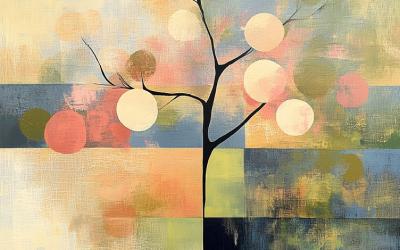It was a typical, early winter day in Michigan. Cold and wet and gray all over. My schedule for the day was fairly light—only an RW staff meeting to attend. For some time, I'd been wanting to write something about the use of liturgical color in worship, and I was hoping to get some help by asking a few questions. Is using liturgical color in worship an idea that sounds right and logical and helpful? Or is it, in the end, just another worship gimmick? My friends didn't have the nice short answer I was looking for.
Resources by Dean R. Heetderks

Banner block. I know you’ve been there. Your worship planning committee hands you yet another impossible assignment: “We’re having a series on the psalms of lament and would like something that reflects the somberness of the topic yet is bright and lively—after all, we don’t want to depress people” or “We’re having a special service on the quality and character of God.

The following is a possible note of explanation that could be printed in a bulletin to accompany the Epiphany banner shown here.

Explaining a Visual: Learning How to View Liturgical Art
It happens every time we use a new visual in our worship. One gentleman in my church catches me after the service and asks me what each part of the new visual means. We look at the banner, and I describe how the final piece came to be: what we started with, what problems we encountered while constructing it, and what pleasant surprises happened along the way.

After returning from church a couple of weeks ago, I announced to my wife, "We will never cut another piece of felt for a banner again!" No, it wasn't my final run-in with the flower committee. I had just seen a demonstration of our new three-times-as-bright-as-the-old-one video projector! My wife was not impressed. "People don't want to look at that, they want something real," she said, in the tone I've come to expect whenever I'm on a technology rant.

If youve been following this column at all, you know that I am very interestedand sometimes successfulin setting aside my artists ego every now and then to get other people involved in the creation of a worship visual. As hard as it is sometimes to work with a group of people with varying opinions, the result is almost always worth the extra effort. (And from what I read in your e-mails, some of you are doing way too much of the work yourselves.) For this cooperative project, why not recruit a group who are easy to work with: kids?

It's Sunday morning. You're dead tired. It's been a hectic week, even without the pressure of having to finish the Lent banner in time. After waiting long enough to make sure that none of the flower committee members would show up to "help," it was late at night when you finally got your banner to hang just right.

Did you ever propose a great idea to a committee? By the time all of the “You know, you could . . .” comments have died down, you’re left with an idea not at all like the one you started with. These folks don’t really mean to ruin your design, they just get caught up in the excitement and want to be a part of a good thing. Well, here’s a banner design that simply can’t be over-designed. You can honestly tell the committee that even you don’t know what the final thing will look like!

You’ve done it, I know you have. At some point or another in your banner-making career, you’ve been asked to make a banner design to represent music. What’s the first thing that popped into your head and onto your fabric? A HUGE treble clef surrounded by dancing quarter- and half-notes. You shouldn’t feel bad about this, of course. Clichés are born out of good ideas. They become clichés when everyone acts on the same good idea.

I like banners without words. Most visuals do just fine by themselves if kept simple enough. Sometimes, though, it's just too difficult to illustrate a Scripture passage or concept with a graphic. In those cases we resort to words. But often the words are scattered across too much fabric and end up looking like so many elementary-school bulletin boards.
